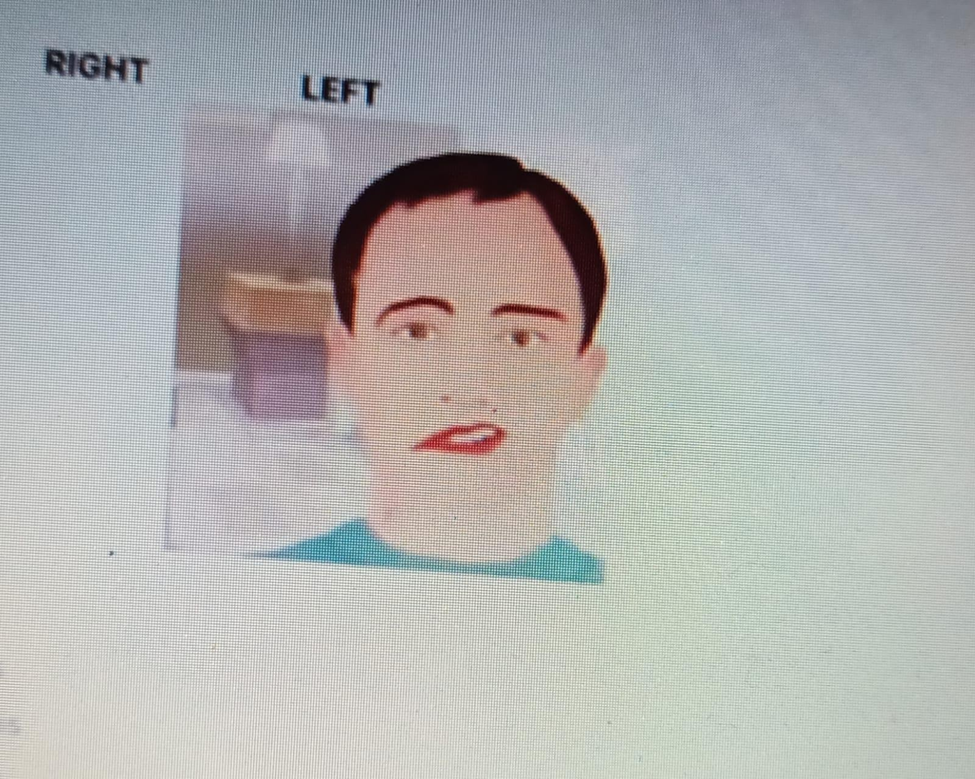The nurse exploring cranial nerves function and observes the following reaction: The nurse documents that the client has a:

Left VII cranial nerve paralysis
Right Vll cranial nerve paralysis
Right V cranial nerve paralysis
Left V cranial nerve paralysis
The Correct Answer is B
Choice A rationale: This is not accurate since the manifestations of facial nerve paralysis are observed on the contralateral side which in this case is the left side of the face hence the right facial nerve is paralyzed.
Choice B rationale: Facial nerve paralysis cause symptoms such as drooping of the eyelid, cheek or mouth as depicted in the above picture. The right facial nerve is paralyzed since the nerve innervates the contralateral side hence the effects are demonstrated on the
left side of the face.
Choice C rationale: trigeminal nerve paralysis causes symptoms such as weakness in muscles of mastication, altered sensation over the face and tongue, and hearing impairment and not the symptoms depicted above.
Choice D rationale: trigeminal nerve paralysis causes symptoms such as weakness in muscles of mastication, altered sensation over the face and tongue, and hearing impairment and not the symptoms depicted above.
Nursing Test Bank
Naxlex Comprehensive Predictor Exams
Related Questions
Correct Answer is C
Explanation
Choice A rationale: A glycated hemoglobin (HbA1c) value of 6.9 indicates that the client has prediabetes, which is a risk factor for developing diabetes.
Choice B rationale: A postprandial blood glucose level of 170 mg/dL is within the normal range.
Choice C rationale: This indicates that the client has diabetes mellitus. According to the American Diabetes Association, a diagnosis of diabetes can be made if one of the
following criteria is met: a fasting plasma glucose level of 126 mg/dL or higher, a postprandial blood glucose level of 200 mg/dL or higher, or an HbA1c value of 6.5% or higher.
Choice D rationale: A fasting plasma glucose level of 90 mg/dL is within the normal range.
Correct Answer is D
Explanation
Choice A rationale: This is a sign of worsening diabetes insipidus.
Choice B rationale: This shows signs of overhydration, as urine output is high and specific gravity is high.
Choice C rationale: This is a sign of worsening diabetes insipidus.
Choice D rationale: Vasopressin is a hormone that helps the kidneys retain water and concentrate urine. Diabetes insipidus is a condition where the body does not produce enough vasopressin or does not respond to it, resulting in excessive urination and diluted urine. The goal of vasopressin therapy is to reduce urine output and increase urine concentration, which indicates that the kidneys are functioning properly and the body is hydrated.
Whether you are a student looking to ace your exams or a practicing nurse seeking to enhance your expertise , our nursing education contents will empower you with the confidence and competence to make a difference in the lives of patients and become a respected leader in the healthcare field.
Visit Naxlex, invest in your future and unlock endless possibilities with our unparalleled nursing education contents today
Report Wrong Answer on the Current Question
Do you disagree with the answer? If yes, what is your expected answer? Explain.
Kindly be descriptive with the issue you are facing.
